With the release of Windows 8 and Windows 8.1, the need arose to write an article on how to share files and folders in these operating systems. The sharing process in them is almost identical and, by the way, is not critically different from the sharing process in Windows 7 local network. So, how to share Windows 8?
1. Configure additional settings for Network and Sharing Center
In previous articles about sharing, in order to open the Network and Sharing Center, we suggested that you do the following: Click right click mouse over the network icon in the tray and select Network and Sharing Center: Network file sharing in Windows 8
For some users, the network icon may be hidden in the pop-up window: Network file sharing in Windows 8

Perhaps for some, opening the Network and Sharing Center through the Run line will seem easier. To open the Run line, press the Win and R keys in sequence, and paste the following command into the line:
control.exe /name Microsoft.NetworkandSharingCenter
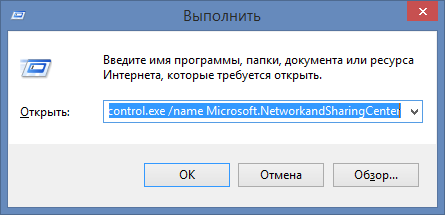
The Network and Sharing Center window will open.

When viewing active networks, you can see a list available networks and availability of Internet connection. also here you can create a new network or try to troubleshoot (it never helped me :)). Here we are interested in the link Change advanced sharing settings. Click on it. The window that opens presents some public access parameters, separately for each of the network profiles: private. guest (public) and all networks.

Network profiles appeared in Windows Vista, And Windows users continue to suffer from this, to put it mildly, not the best innovation. In Windows XP, these profiles did not exist, and sharing took place in just a few clicks. Microsoft's intentions are also clear: to ensure greater computer security when interacting on the network. However, is this really necessary for a home user? Especially for those who do not store confidential data on their computer. Expanding each of the profiles (next to the profile name there is a button with a down arrow), change the settings as shown in the screenshots (the screenshots are clickable):
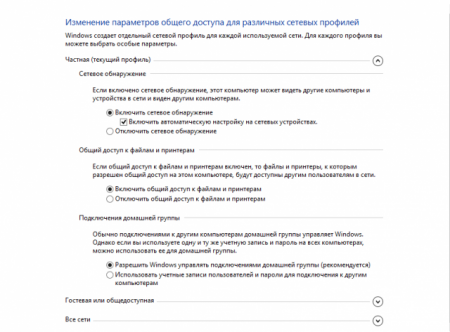

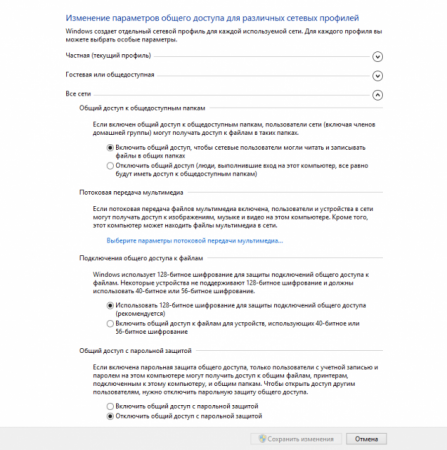
After setting, do not forget to save the changes.
Lyrics. While. like other developers operating systems and programs have almost abandoned confirmation of actions a long time ago, in Windows you still need to press Confirm, Save, OK, Yes, of course, And what do you think, of course I want to save the settings, no, I’m just messing around here
2. Sharing a folder
Select any folder on your computer that you want to make visible to computers on your local network. For me this is a folder with the magical name "in". Right-click on it and go to properties

Go to the Access tab and click the button Advanced setup

Check the box next to Open general access to this folder and then click the Permissions button
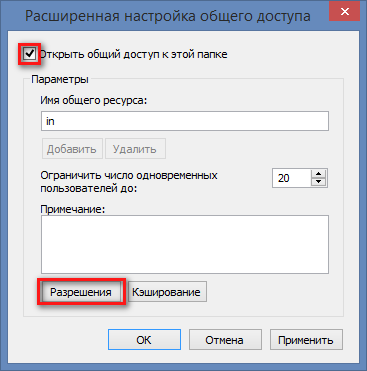
Here you can also change the name of the folder, which will be visible to other network users, but the name on your computer will not change. You can also limit the simultaneous number of users who can view the content of a resource. We recommend that you set this value to 1 or 2 if there are many computers on your local network. If you share a folder in home network, in which there are only 2 - 3 computers, you can leave this value unchanged. In the next window, click the button Add
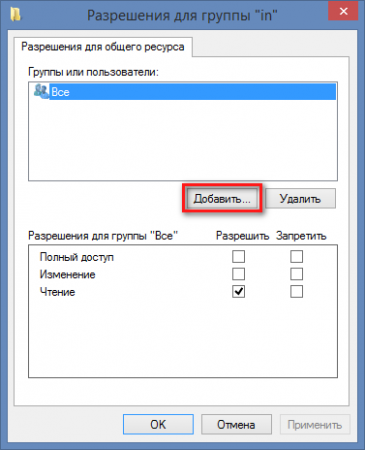
Next, click the Advanced button
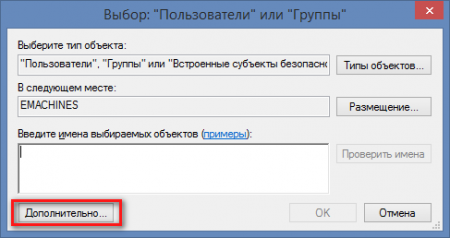
In the window that opens, click the Search button, scroll down the list and find the Network item. Select it and click OK
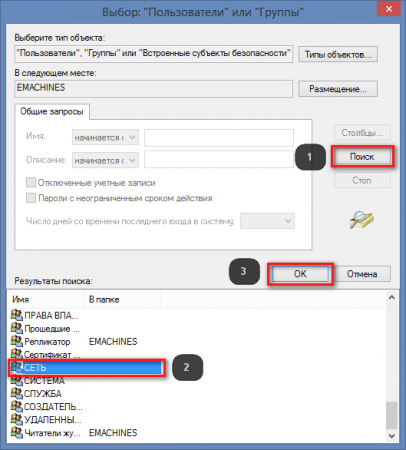
In the next window, also confirm your actions. In this window
![]()
you can set permissions for network users: whether they can only read the contents of the resource or write to it.
3. Changes to security settings for a shared folder
In order to do this, go to the security tab in the folder properties, click the Change button and repeat the steps described in step 2.
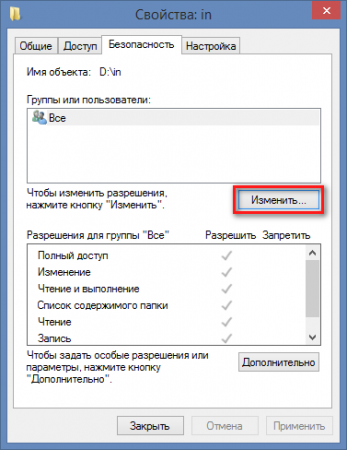
Screenshots for clarity
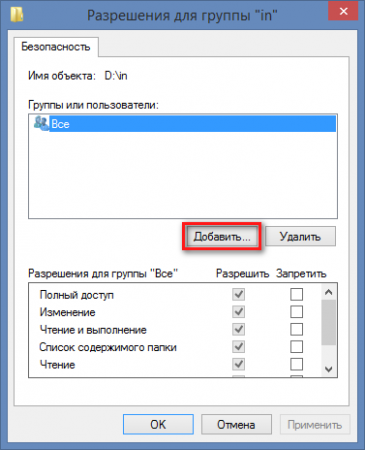
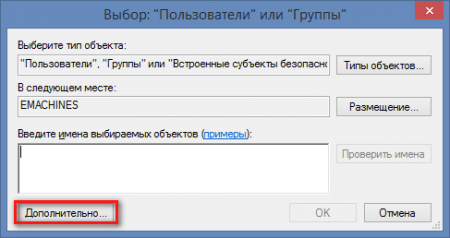
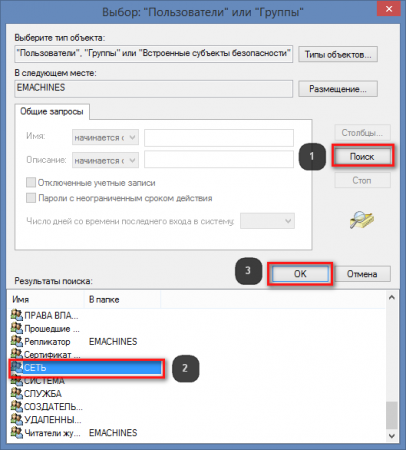
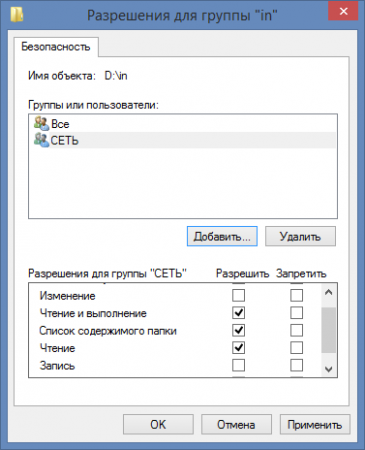
IN last window you can choose permissions for network users: will they be able to change the contents of the folder, i.e. delete and write files, or will they only be able to read and copy data from it. Now, if you go to the Network on another computer in Explorer or any other file manager, you will see your computer with the shared folder.
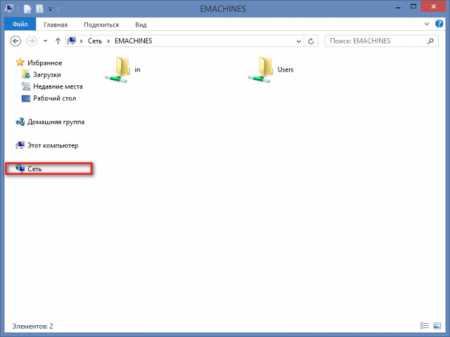
4. Possible problems
This sharing method was tested on Windows 8, Windows 8.1. The computers from which access to the test subject was obtained were under Windows management XP, Windows 7, Mac OS 10.6.8. If the computers still do not see each other, then it is worth trying to configure your antivirus. Users of Kaspersky Internet Security, Nod, Avast and other antiviruses often experience access problems. You need to dig into the firewall built into these products. If you do not see a shared computer in a network environment, then this access method sometimes helps: Find out the IP address of your computer. This is done like this: Open the command line by typing the command in the Run line

IN command line run the command:
ipconfig
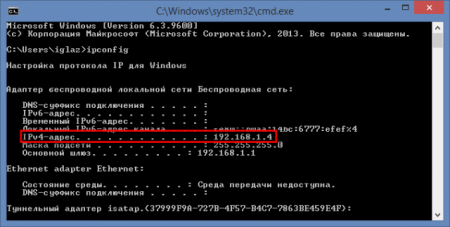
The numbers next to the IPv4 address are the IP address of your computer. I have this
192.168.1.4
Enter these numbers in the address bar of the explorer on the computer from which you are connecting to the shared machine and press Enter. Before the numbers, add two backslashes:

This is such a complex sharing. Let's hope next Windows versions 10 Microsoft will make this process simpler and more user-friendly.
We have already talked about how to create one in Windows XP or share access to it, so I will not repeat it.
Creating the same shared folder in Windows 7 is a little more complicated, so I'll show you everything in order.
I want to warn you right away. Never Do not share system folders such as the Windows and Program Files folder. This should not be done for security reasons.
- It's best to create a folder on your Desktop. Call it whatever you want. The name does not matter, as long as it was clear to all your network users. I usually name the folder Exchange.
- Right-click on this folder and select the link from the drop-down list Properties.
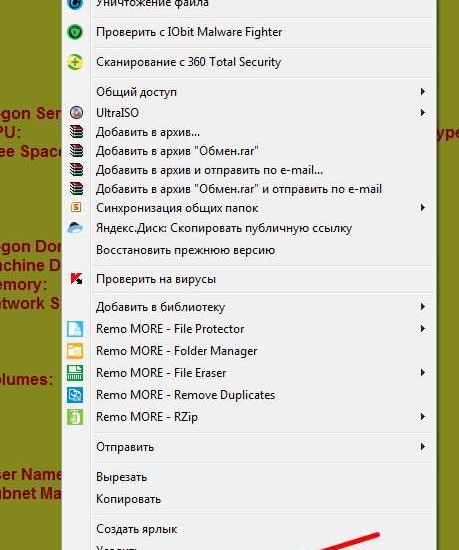
Go to the tab Access and press the button Advanced setup...
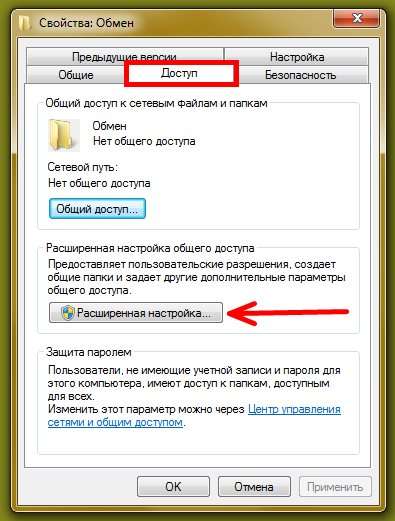
Check the box next to the entry Share this folder and click on the button Permissions.
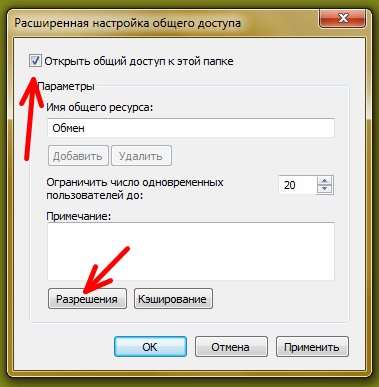

In the field under the inscription Enter the names of the selected objects write the word Guest

- Assign permissions for the Guest by checking the boxes and clicking the button Apply And OK.

- Now go to the tab Safety and press the button Change...
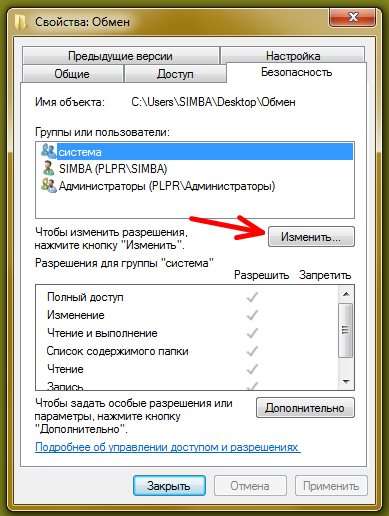
- Next press the button Add
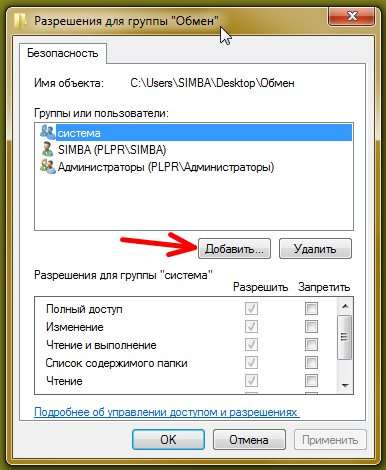
Users of the Windows 7 and Windows 8 operating systems often ask how to share a folder. The fact is that with the release of these operating systems, the procedure for opening access to a folder has become a little more complicated. In this article we will talk about how to open access to a folder using .
First of all, you need to check the settings for sharing computer resources. To do this, follow the path: Control Panel – Network and Internet – Network and Sharing Center – Change advanced sharing settings.

The following functions should be enabled in the window that opens:
- Enable network discovery
- Enable file and printer sharing
- Enable sharing so network users can read and write files in shared folders
- Use 128-bit encryption to secure shared connections
These settings are sufficient for correct operation. But, if you want any user to be able to connect to open folders, without a password, disable the password request by setting the appropriate setting:
- Disable secure sharing
After this, you need to make sure that all computers belong to the same workgroup. To do this, follow the path: Control Panel – System and Security – System – Advanced system settings – Computer name tab. This should say WORKGROUP.

This is the default value and usually there is no problem with it. But, if the computer name is different, you need to change it by clicking on the corresponding button in the same window.
- Let us remind you that for normal operation with network folders all computers must belong to the same workgroup.
That's it, after we have clarified all the settings, you can open access to the folders. To do this, right-click on the desired folder and select the “Access” tab. Here you need to click on the “Advanced settings” button.
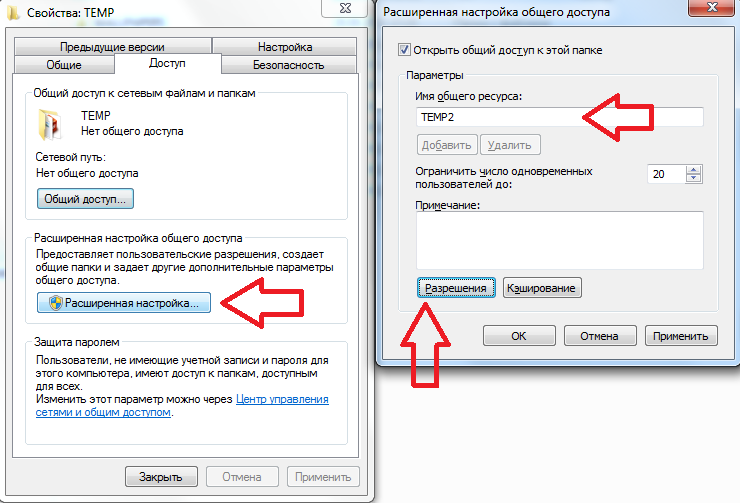
In the window that opens, you need to check the box next to “Share this folder.” Also here you can specify network name for the folder. If you want to allow network users to change files in your folder, click on the “Permissions” button and set the necessary parameters. Once everything is ready, close all windows by clicking on the “OK” button.
I hope this article helped you and now you know how to share a folder.
Some system folders in Windows are hidden from the user so that he does not accidentally delete or change important files on which the operation of the OS depends. In addition, sharing of folders is usually limited. To remove these restrictions, you must set the appropriate settings.
To make hidden folders visible, open the Start panel and click on Computer. At the top left, find the Organize option, expand the drop-down list, and select Folder and Search Options. In the window that appears, open the “View” menu, scroll down the list and under the “Hidden files and folders” option, select “Show hidden folders, files and drives.” Click OK. You have gained access to all hidden directories. Sharing a folder will allow accounts to different users obtain rights to exchange files and other permitted actions within it. Access can be done both locally and over the network. By default, Windows 7 has one shared folder - Public. You can store videos, music, photos and other files in it for sharing or viewing.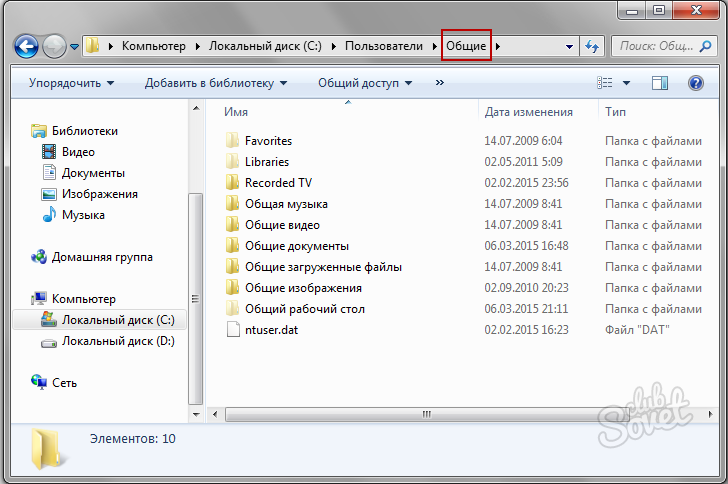
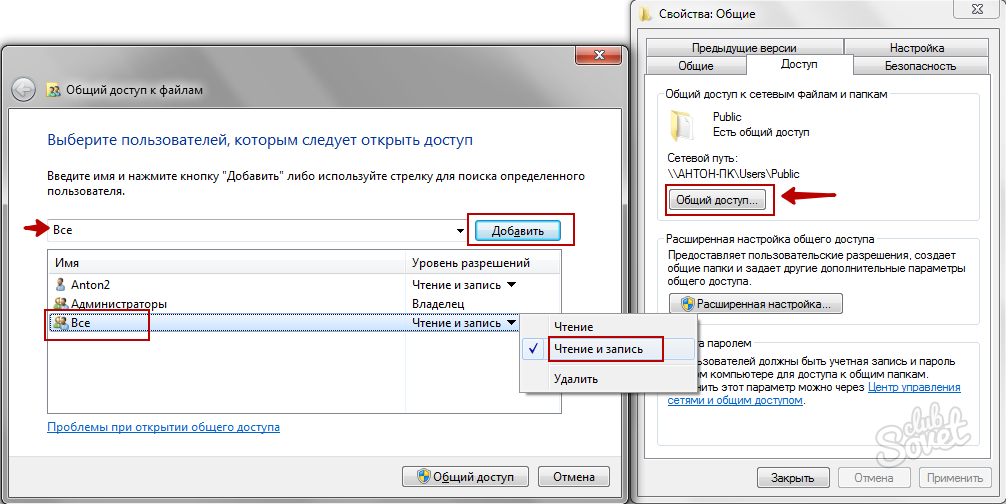
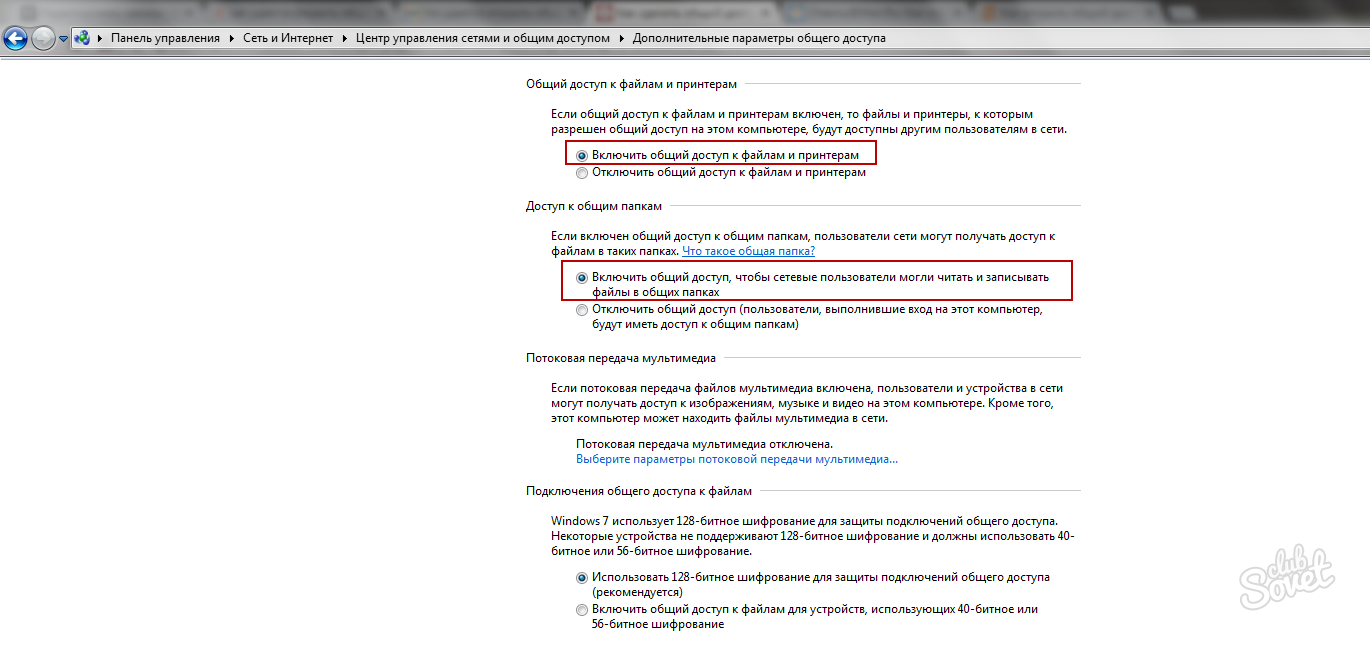

![]()
It is not recommended to share the root directory system disk, and Windows folders and "Users". Even if you bypass the restrictions imposed by the system, this may negatively affect the operation of the computer. Use the folder to exchange data Public, copying files there to the appropriate directories: music to the “General Music” folder, photos to the “General Images” folder, etc. This method will always come in handy if you have difficulty accessing a regular folder that is not related to Public.
By popular demand, today I will give brief but informative instructions on how to create a direct Wi-Fi connection between computers on which you have installed Windows system 7, and combining them into a grid, that is, we will open shared access to folders on both computers. Go!
First, we go through the same steps that were already discussed in the article about. Namely:
1. After turn on wifi modules on both computers, go to the “Start > Control Panel > System and Security > System” section. Under "Computer name, domain name, and settings" working group"Go to the "Change settings" page and then click "Change". Default to Windows home the group is called WORKGROUP - you can leave it, but check that on the second computer it is called exactly the same. I gave it the name "homelocal"
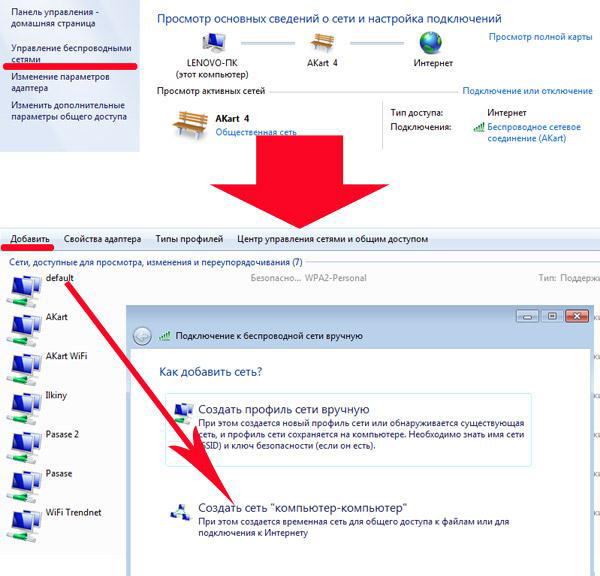
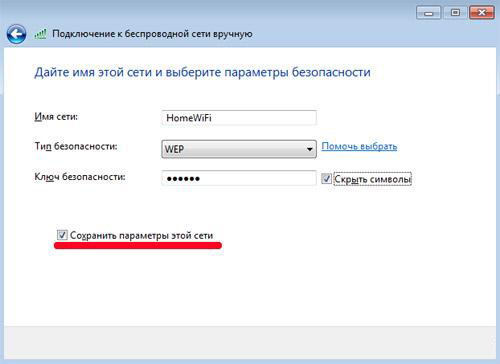
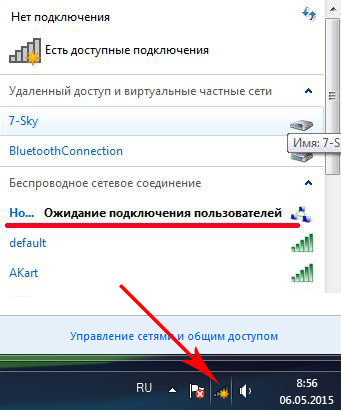
5. Go to the second computer and connect via wifi to this one new network by entering its password. We indicate that this network is "Home"
6. Return to the “Network and Sharing Center” on the first computer and go to the “Change additional sharing settings” section.
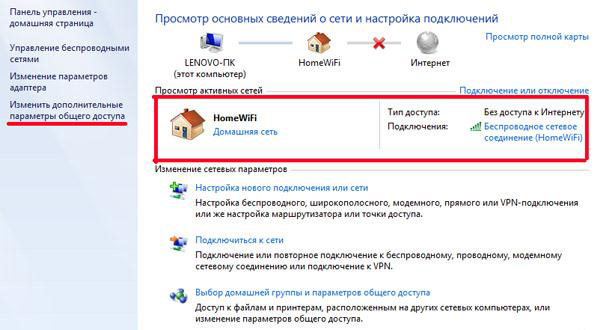
7. Here you need to configure unhindered sharing of folders on this computer— wherever there is a similar setting, check the permission boxes. We also disable “Password protected access”.
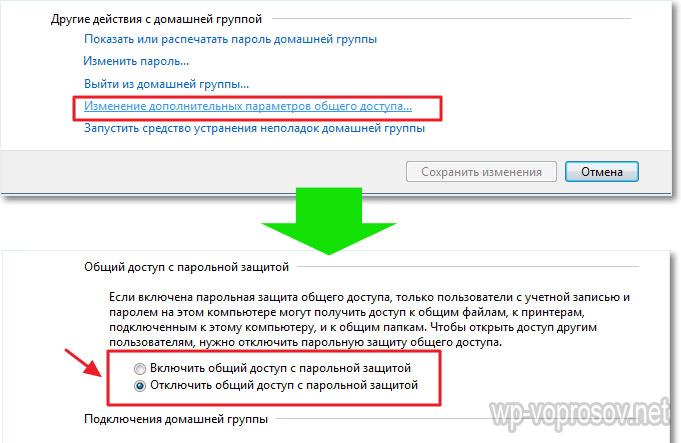
8. We do the same thing on the second computer, starting from step 4.
How to open shared folders in Windows 7?
9. All that’s left to do is open public access to a folder. To do this, find in Explorer the desired folder, right-click on it and go to “Properties > Access > Advanced settings”. Check the box “Share this folder” and save the setting with the “Apply” button.

10. We do the same with all folders that need to be shared on both computers. After that, by going to the “Network” section, you will see both computers, and by going inside them you will see the shared ones shared folders on Windows 7.
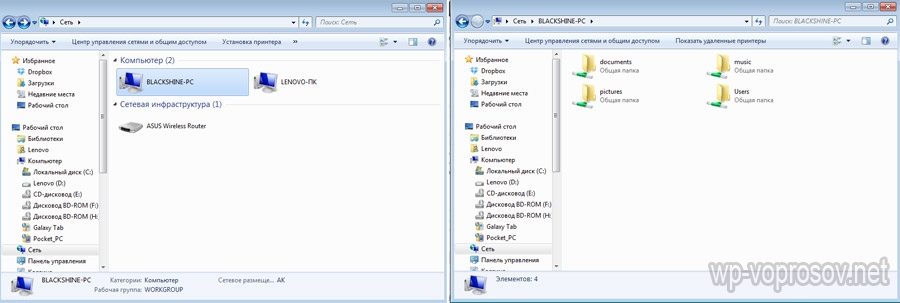
That's all, actually. If you can’t connect to these folders, try rebooting and connecting again, or disabling firewalls - built into Windows or from third-party antiviruses - they can block your attempts to connect.
Finally, how to do the same thing, but on Windows XP
